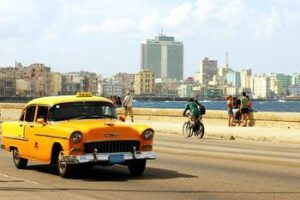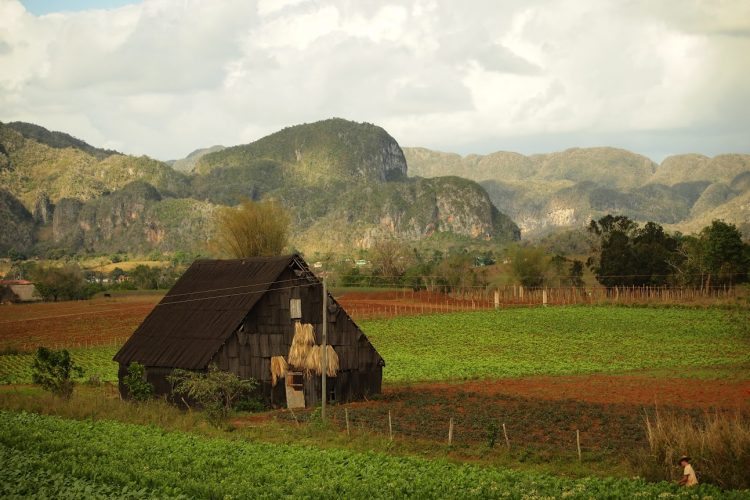
Honeymoon in Vinales Cuba: Exploring beauty and romance in a crumbling Paradise
By Kate Hartshorne
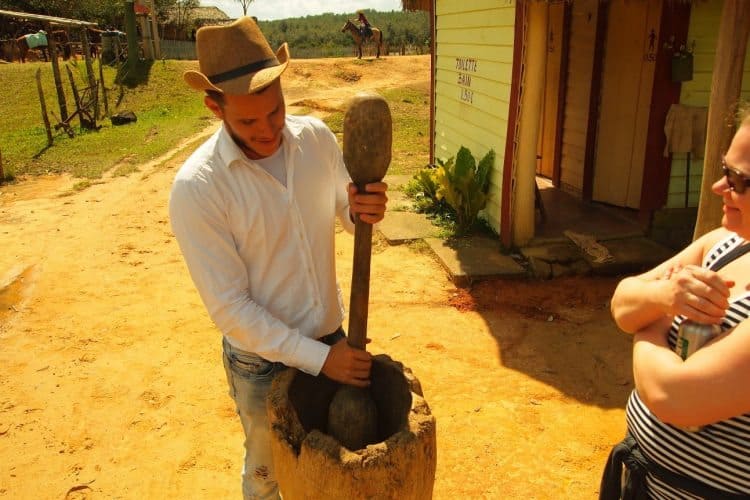
People do many different things for their honeymoons.
The possibilities are endless if you have some creativity, a few bucks, and the desire to do something interesting.
My husband Jon and I both know that while lying around at an all-inclusive may be fun for a day or two, it really just isn’t our style.
We were looking for something a little less common, with a whole lot more flavor, and Cuba turned out to be a perfect choice.
Being parents of six children, we rarely have a chance to travel together without kids, so we had only five days to make our honeymoon in Cuba an unforgettable experience, and we absolutely did.
We spent the first half of our trip in the mountainous region of Vinales (pronounced Veen-yah-lays), and the second half in the beach side town of Guanabo, about 30 minutes east of Havana.
Nicest People in the World?
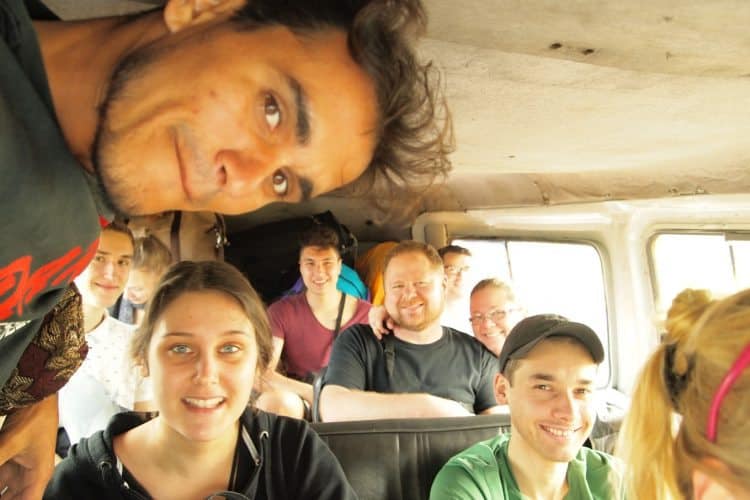
The first and most important thing I have to say about Cuba is that this island is home to the nicest people in the world.
I am still in disbelief at how kind and helpful every person we encountered was to us. Not only was everyone extremely helpful and friendly, but it was also in a completely genuine and non-solicitous way.
They were nice to us because they ARE nice, not because they felt like they had to be, or were trying to get anything out of it. In a time where it feels like Americans are frequently dropping the ball on kindness, this welcoming community was a tremendous relief.
Secondly, the Cuban people were greatly open to talking about life in Cuba, which is fascinating on many levels.
Both Sides of the Struggle
I can definitely see both sides of the struggle, where people are upset about their lack of progress and upward mobility, but yet no one is starving, you see nobody begging in the streets, bleeding to death from untreated medical issues, or the rounded bellies of malnutrition.
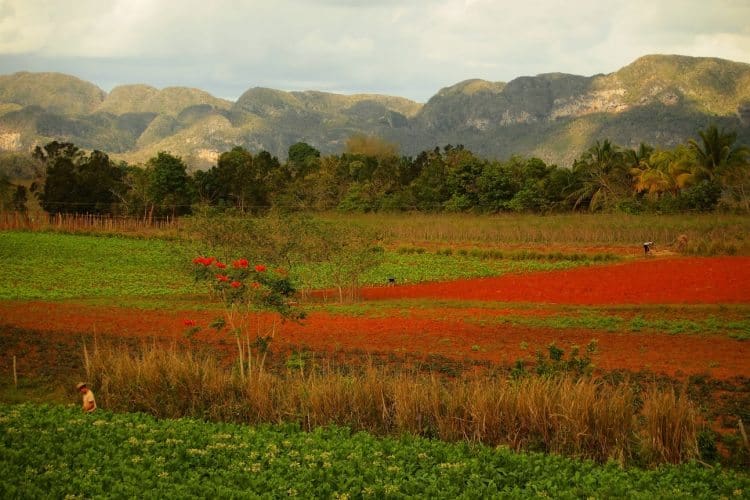
Nobody flaunts their tremendous wealth, and nobody is left to flounder in poverty.
Everyone is educated, but everybody earns an extremely small salary (as in $10 per month). No one we met had more than one or two children, as birth control is widespread and accessible, and abortion is legal.
No One Locks the Door
In Vinales no one locks their doors, even at night, because they do not steal from each other. The crime rate is very low, and the murder rate is among the lowest in Latin America, down with Chile and Argentina.
We felt extremely safe wherever we went.
Hiking in Vinales Valley
We spent the first two days in Vinales, hiking through the valleys where the country grows all of the tobacco for their famous cigars.
We hiked on foot, instead of the widely offered horseback tours, and we were so glad we did, as we learned more from our guide Claudia, a 22-year-old college student, than from almost anyone else on the island.

The horseback tours offer beautiful scenery, but not a lot of conversation with the guides. We hiked into the Valley of Silence, a green lush landscape dotted with farm animals (interesting side note: cows are all owned and sold by the Cuban government, if you kill a cow in Cuba you get more jail time that you do if you kill a person. Beef is only sold in government restaurants).
The square-shaped mountains in Vinales are called Mogotes, beautiful formations covered with green foliage and palm trees.
We watched a local farmer roll cigars and bought ourselves cigars directly from him. The farmers are allowed to keep 10% of their tobacco to sell privately, while 90% of the tobacco gets taken by the government and made into famous brands like Cohiba and Monti Cristo that are so highly sought after and expensive.
We bought a bundle of Artisan cigars from the farmer we met along the way, 20 cigars for $80. Jon was given a sample cigar and was quite delighted with the product.
Fresh food in Season

It was striking in Vinales how all of the food that was eaten and served was fresh, local, and in season. There is very little that is traded so the Cuban people work with what they grow and raise, which seems a million times healthier to me.
There are almost no pre-packaged foods, and everyone goes straight to the farm to buy their food or lets the vendors come to them with their wheelbarrows full of bread or fruits.
We ate fresh papaya and pineapple daily, rice and beans of course, and many other delicious concoctions cooked up by Dayanette, the owner of the Casa Particular we called home.
In Cuba, the most popular way to visit is to stay with someone in their home, in a sort of Airbnb-type scenario. Homeowners can rent rooms out to tourists for a fraction of the price of what a hotel room would cost (we paid $30-$35 per night, the range is anywhere from $15-$50 per night).
The rooms that we stayed in were clean, private, with our own bathroom and a private terrace, and both had a rooftop patio where we could see a tremendous view of the mountains or the ocean, and the stars at night.
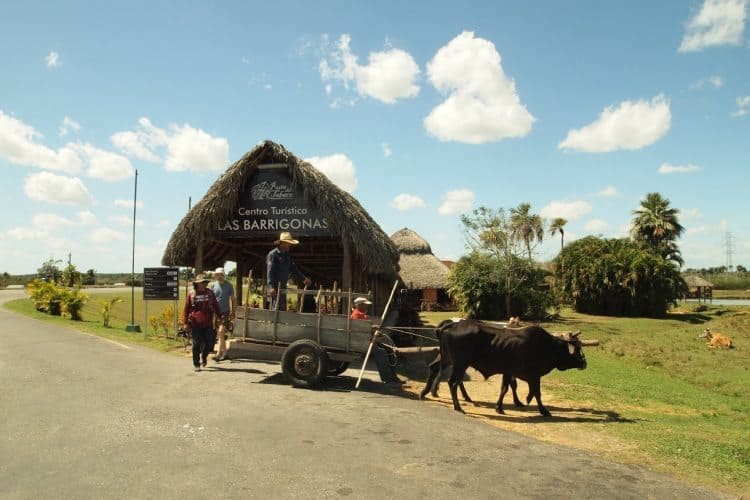
The casa owners were a tremendous help arranging tours, taxis, and just giving us ideas of where to go and what to do.
Hosting tourists is their livelihood, and they take great pride in providing us with all of the makings of an excellent trip. We found our casas online before arriving in Cuba at www.bbinvinales.com.
We made a reservation for our dates but all transactions in Cuba are done in cash, so we paid cash at the end of our stay.
Meals in the Casa
Casa owners will provide meals for you, and this is absolutely the way to eat in Cuba. The restaurants are not excellent, but home-cooked meals are spectacular.
We had breakfast and dinner each day in the two casas where we stayed, and what a fantastic choice. Breakfast cost $5 per person, while dinners cost $10, and everything we ate was delicious.
Casa owners generally also provide drinks if you request them, and both of the places we stayed had a mini-fridge in our room with bottled water, sodas, and beer.
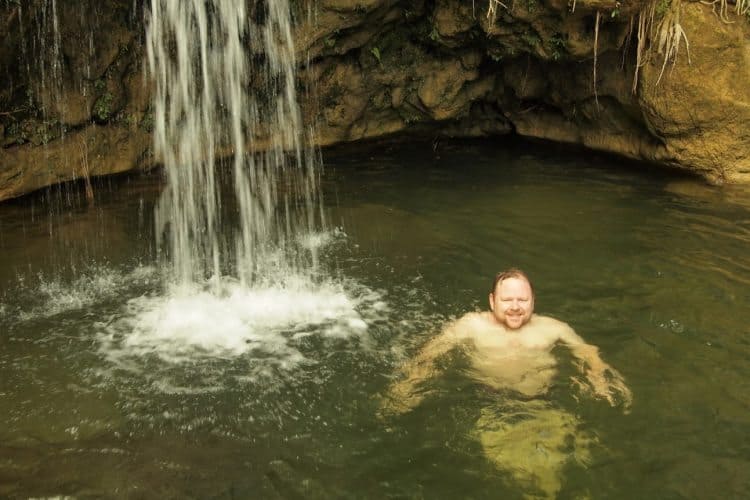
We spent our last two days in Cuba at the beach in a town called Guanabo, just east of Havana. We traveled to Guanabo via a 1953 Plymouth taxi driven by a man named Alexis, who made a pit stop at a local waterfall in Soroa, with a natural pool where we ate lunch and swam in the cold freshwater.
Alexis charged us $80 for the long travel day and was happy to wait for us as we explored Soroa. The only glitch was keeping him awake for the second half of our four-hour drive as the rice and beans had him nodding off while driving. Yikes!
Ocean Time
We wanted to avoid the city this trip, as we were coming and going quickly, but we wanted some time at the ocean.
The casa we rented was run by a woman named Marlene, who rents two rooms upstairs from the family’s home. This casa felt more like a hotel and less like a home share, with the rooms having a separate entrance.
The beach was a quick walk, and although it was quite removed from the town of Guanabo, it was nice to have a private stretch of gorgeous beach to enjoy on our own.
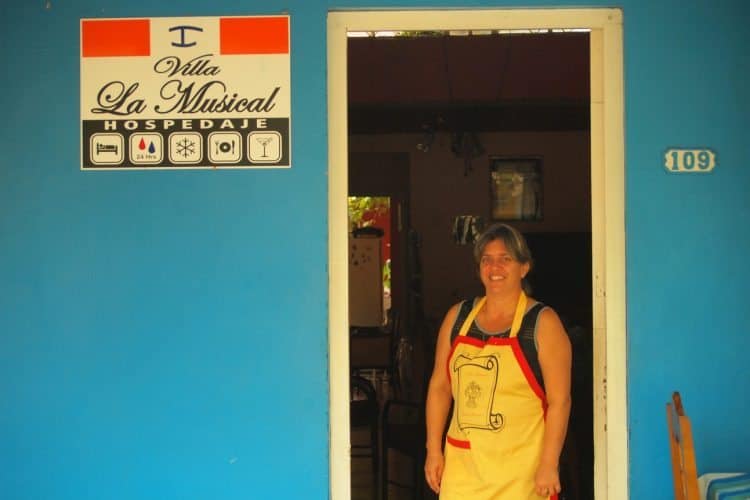
Guanabo is a town where the Cuban government sends its employees for vacation. The government owns tons of crumbling houses along this strip of beach and rents them out for a week at a time to Cubans and their families.
Locals told us that in the summertime the town and beach are packed to the gills with vacationers, but in the offseason, it was not the most exciting town to visit.
We found the beach in Guanabo to be relaxing and unassuming, a great place to kick back and enjoy a rum and coke and a book.
Unexpected Beauty
The saddest part about our Cuban honeymoon was the fact that it ended so quickly. We will definitely be returning to this magical island, feeling more confident in our destination choices now that we’ve gotten a bit of a feel for how to get around. Cuba is a place of unexpected beauty and crumbling infrastructure, huge smiles, and a deep connection to what’s really important in life.
Visiting Cuba has awakened a part of me that has been closed for a long time, the desire to travel again to places that are real and beautiful and not made shiny in the name of tourism. Let this be the beginning of many more adventures to come
Tips on travel to Cuba:
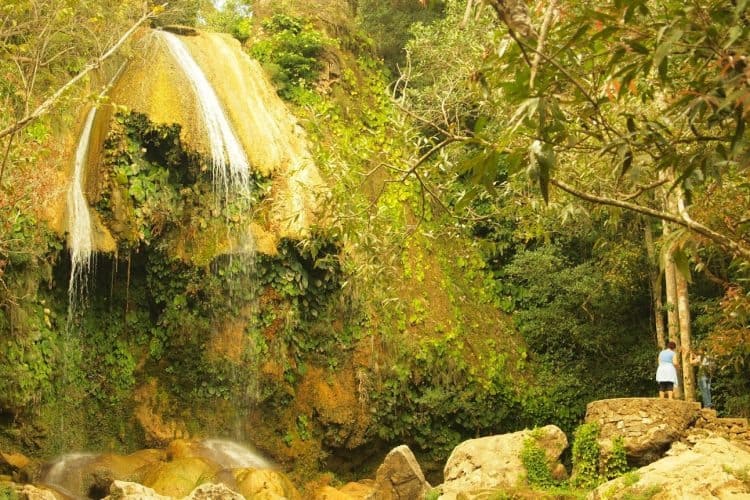
Cuba has two currencies, the National Peso (used by the Cuban people) and the Convertible Peso (used by tourists).
Don’t be surprised that there are two prices for almost everything in Cuba, and tourists, appropriately, pay more for everything than locals.
Cash is the way to pay in Cuba, credit cards are not widely used, and there are no ATMs for American banks, so for Americans visiting Cuba, you need to have cash.
We converted our dollars to Euros in the US and then converted the Euros at the airport in Havana. You can convert US dollars as well, but they charge a 10% penalty for this.
Euros to Dollars to Pesos
It felt like by the time we paid to change our dollars into Euros with all the various bank fees and exchange rates, that it wouldn’t have made that much of a difference to just change US dollars in Cuba. You can change pesos back to US dollars on the way out and there is no penalty.
Car rental in Cuba is a hassle and a challenge. I’d recommend against it. Most Cubans do not have cars, so tourists driving around sticks out like sore thumbs. Taxis and buses are abundant and affordable. We chose to take a shared taxi (taxi colectivo) to Vinales.
We took a private taxi from the airport in Havana to the Viazul bus station in Havana, which we negotiated down to $25. The shared taxi ride from Havana to Vinales was hilarious and memorable, with 12 tourists packed into an old 1940’s van, and the delightful driver Manuel and guide Edelberto making our long drive to Vinales entertaining.

We paid $30 each for the ride before we realized that it can cost as low as $15 per person, so negotiate the price with your taxi driver before getting in.
Each person in our van paid something different. You can also take the Viazul buses around Cuba, they are affordable but often require you to purchase tickets the day before, and the bus stations are inconveniently located outside of the cities.
Visa Process
The visa process for visiting Cuba is easy and uncomplicated, although many Americans are not aware that they can easily visit. You need to have a reason to visit, and “People to People” is a legitimate reason, so visiting these lovely Cuban families in their homes and getting to know them is a legitimate reason to visit Cuba.
While “lounging on the beach with a Pina Colada” is not yet a legitimate reason, it is quite possible to do just that, while also connecting with the lovely and wonderful people of Cuba. We flew Jet Blue to Havana, and they did the visa for us, asking the reason for our visit at the time of ticket purchase.
To travel to Cuba one needs to have travel insurance, which was simple to buy online for about $12. No one asked us to show them our travel insurance, but it would have been a drag to get stopped at customs and not have it.
Spanish is extremely useful in Cuba! This seems obvious, but it is not entirely necessary to know Spanish when visiting Cuba. Like most places, it is good to learn some rudimentary phrases at least to communicate with people. Many people in towns like Vinales speak English, including many casa owners. Many tourists we met did not speak Spanish or English at all, and they had a more difficult time.
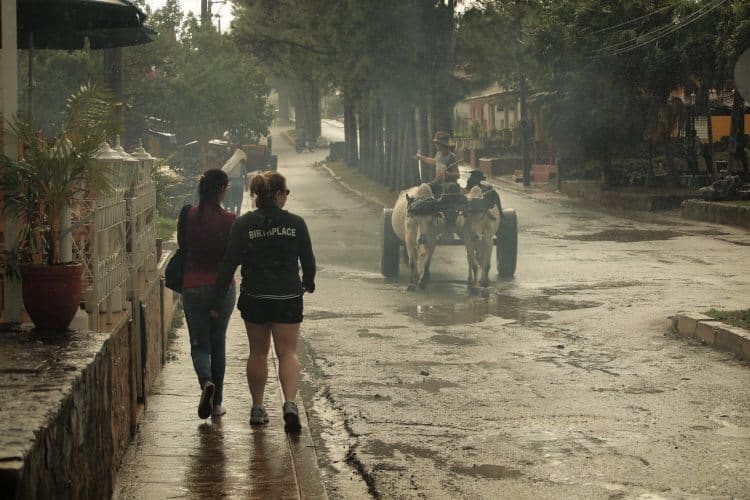
Long Airport Lines
The airport has extremely long lines in Cuba. It is important to arrive at least three hours ahead of flight departure time in order to wait out the long check-in lines, and the currency exchange line.
We arrived three hours ahead of schedule and just made it to our gate for boarding. The other important thing to remember is which terminal you fly into Havana.
For some reason, the terminals are located a few miles apart. We were accidentally dropped at the wrong terminal and had to pay $10 for a taxi to another.
Enjoy Cuba and ask questions! The Cuban people were so open to sharing their stories, proud of what they do and have, and happy to have you. Enjoy every minute of this uniquely beautiful island, we can’t wait to go back!
- Wilburton Inn, Manchester VT: Like Family - April 16, 2022
- Visiting Havana and Trinidad, Cuba in 2018 - June 5, 2018
- Staying with a Family in Vinales, Cuba - April 18, 2017





